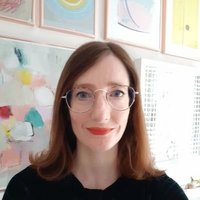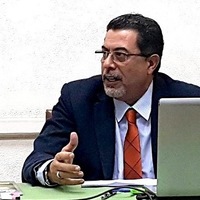
Linda N Keane, FAIA
Linda Keane, FAIA, is an artist, architect, and academic active in greening public imagination. Professor of Architecture and Environmental Design, she is the founder of the architecture program at the School of the Art Institute of Chicago. A partner in STUDIO 1032, she works on green initiatives along the Chicago-Milwaukee corridor. An e-Learning innovator she is passionate about introducing what design is, what design does and why it is important to our sustainable future. Co-founder and Creative Director of the NEXT.cc STEAM by Design, she delivers teacher professional development, elementary, middle and high school student workshops, and consults on integrating place-based projects curriculum within K-12 schools. She is a dynamic speaker with invited keynotes, TEDx’s, co-hosting of international design conferences, publishing and leading advocacy workshops on Green Schools, Green Cities, and Design As Nature place-based project learning. Her work is recognized as a Green STEM Innovator by the National Environmental Education Foundation, the United States Green Building Council for Excellence in Green Building, the National Endowment for the Arts for Media Education Innovation, and Creative Achievement in Education by the Association of Collegiate Schools of Architecture and Union of International Architects. She is a member of the National Place Making Board for Project for Public Spaces, Metropolitan Planning Council Placemaking Advisory Board, EU's Internet of Things for Children, American Institute of Architects, American Association of University Women, National Science Teachers Association, National Art Education Association, and Fulbright International.
Phone: 312 629 6650
Address: Sullivan Center
33 S. State
Chicago, IL 60603
Phone: 312 629 6650
Address: Sullivan Center
33 S. State
Chicago, IL 60603
less
Related Authors
Richard Price
University of Oxford
Daniel D. Hutto
University of Wollongong
Yasser O . M . Mahgoub
Faculty Member
Richard Kahn
Antioch University
Nicola Jane Holt
University of the West of England
David Pierre Leibovitz
Carleton University
Ashraf M. Salama
Northumbria University
John Barry
Queen's University Belfast
SHERIF MORAD ABDELMOHSEN
American University in Cairo
Stefano Maffei
Politecnico di Milano
InterestsView All (24)










Uploads
Videos by Linda N Keane, FAIA
iterative solutions so critical to introducing new ideas to the world in which we live.
NEXT.cc is a STEAM by Design E-learning resource that introduces what design is, what design does, and why design is important to our sustainable future. Used in 50 states and over 200 hundred countries, NEXT.cc works to connect the wonder of the built and natural worlds with youth, empowering their voices and participation in design of a better, more equitable, and inclusive world.
Papers by Linda N Keane, FAIA
does, and why it is important to the design denied public. www.NEXT.cc connects personal choices with local place based information, object, experience, and environmental design activities linked withglobal museums, institutions,and contemporary practices effectively changing consumers into creators.
Children, teachers, and families access the world of ideas and innovation through writing, speaking, drawing, graphics and modeling moving between computer, community and the world. www.NEXT.cc’s three hundred+ journeys/five thousand+ resources/one million+ users find consilience of scales- nano, pattern, object, space, architecture, neighborhood, urban, regional, and global. Eco web learning grows a community of eco literacy connections expanding opportunities for our sustainable future.
Keywords: Design, Design Thinking, Design Education, Design Economy, Digital Literacy, Ethical Imagination, Creativity, Sustainability, K12
communicate and collaborate. STEAM by Design is supported by the ELearning Designopedia, NEXT.cc, aligned with newly released NEXT Generation Science Standards, North American Association for Environmental Education Standards and Art and Design Standards. STEAM by Design positions designing as world pedagogy that connects students as citizen activists in the communities in which they live and learn.
iterative solutions so critical to introducing new ideas to the world in which we live.
NEXT.cc is a STEAM by Design E-learning resource that introduces what design is, what design does, and why design is important to our sustainable future. Used in 50 states and over 200 hundred countries, NEXT.cc works to connect the wonder of the built and natural worlds with youth, empowering their voices and participation in design of a better, more equitable, and inclusive world.
does, and why it is important to the design denied public. www.NEXT.cc connects personal choices with local place based information, object, experience, and environmental design activities linked withglobal museums, institutions,and contemporary practices effectively changing consumers into creators.
Children, teachers, and families access the world of ideas and innovation through writing, speaking, drawing, graphics and modeling moving between computer, community and the world. www.NEXT.cc’s three hundred+ journeys/five thousand+ resources/one million+ users find consilience of scales- nano, pattern, object, space, architecture, neighborhood, urban, regional, and global. Eco web learning grows a community of eco literacy connections expanding opportunities for our sustainable future.
Keywords: Design, Design Thinking, Design Education, Design Economy, Digital Literacy, Ethical Imagination, Creativity, Sustainability, K12
communicate and collaborate. STEAM by Design is supported by the ELearning Designopedia, NEXT.cc, aligned with newly released NEXT Generation Science Standards, North American Association for Environmental Education Standards and Art and Design Standards. STEAM by Design positions designing as world pedagogy that connects students as citizen activists in the communities in which they live and learn.
Volume 7 Number 1 Orietta Pedemonte and Laura Tedeschini Lalli, Guest Editors, Spring 2005
The experience of teaching mathematics in schools of architecture attempts to bridge the gap that separates the humanistic and the scientific. STUDIO 1032's article, The Geometry of Frank Lloyd Wright, builds on the legacy of geometric patterning found throughout different periods of Wright's work with its basis in proportions from nature. This research, conducted over a decade at the University of Wisconsin Milwaukee was the groundwork for Wrightscape: The Geometry of Wright high school edition. "